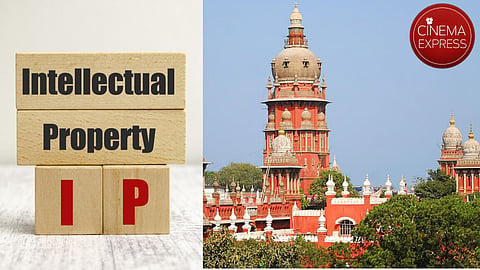Advocate Bharath: Lack of clear documentation is the root of IP-related disputes
With the creative industry increasingly entangled in legal disputes over rights, ownership, and revenue from artistic works, the film and music industries are more polarized than ever. To shed light on this issue, advocate Bharath joins CE to unpack the legal intricacies of Intellectual Property (IP) laws in India. He firmly believes that knowledge of the law and clear, unambiguous agreements can prevent court litigations.
Bharath’s insights come in the wake of the recently held panel discussions by the International Trademark Association (INTA) and Kria Law, titled IP and Music. These discussions explored topics such as ‘Rights of Independent Artists, Labels, and Producers,’ ‘The Role of Music Organizations and Societies,’ ‘AI’s Impact on Film & Commercial Music,’ and ‘Balancing Licenses.’
Intellectual property covers a wide spectrum. Could you walk us through its different types and how they apply to the music industry?
Intellectual property law broadly consists of six or seven categories. Copyright, the most significant category, covers literary works such as books and software, music, cinematography, paintings, photographs, and sculptures. Then there are trademarks, which protect brands by establishing a connection between a product or service and its origin, helping consumers identify the source. Patents come into play for inventions and innovations, ensuring exclusive rights to new technological advancements. Additionally, we have data protection and e-commerce laws, which regulate digital transactions and online security. Another important category is geographical indications (GI), which certify that certain products are unique to a specific region, such as Madurai Malli (jasmine) or Kolhapuri chappals. In the music industry, copyright plays a crucial role in determining ownership, as different stakeholders—composers, lyricists, singers, and producers—are involved in the creation of a song, each with distinct rights over the work.
How do India’s IP laws compare to international standards? Are there key differences or enforcement challenges?
Indian IP laws are robust and, in some ways, better than international treaties. Most of India's IP laws stem from the Trade-Related Aspects of Intellectual Property Rights (TRIPS) agreement. India has signed around 7-8 such treaties. When it comes to enforcement, Indian courts are among the finest in the world. IP rights fall under commercial disputes, which are handled by dedicated commercial courts with specialized judges. The Civil Procedure Code has been amended to ensure swift resolutions, with cases often disposed of within 10 months to 1.5 years, depending on the judge overseeing the matter. Additionally, India has significantly improved its registration process. The time taken to grant patents and trademarks has reduced, and filings have increased by 100-150 per cent over the last five years.
What are the grey areas in the law regarding ownership? What changes do you suggest to bring more clarity?
The law itself is clear-cut and robust. Confusion arises when people assume ownership without formal agreements. There is no room for assumptions in law. One of the most misunderstood aspects of copyright law is the distinction between creator and producer. In music, these terms may or may not refer to the same person. For example, if I commission you to write five songs for a film, I am the producer, and you are creating the songs specifically for that project. Since I am funding and commissioning the work, it is not considered your independent creation. This distinction must be clearly stated in the contract. If there is no contract, the producer automatically becomes the owner of the content. However, an ambiguous agreement is even more dangerous than having no agreement at all.
What are some landmark legal developments in Indian IP law?
Significant judgments date back to the 1970s, when Justice Krishna Iyer ruled that performers have a distinct right to royalties separate from producers. This means they are entitled to payment when their work is used. A major turning point came in 2012 when lyricist Javed Akhtar filed a case demanding royalties for songs he had written, arguing that he should be compensated whenever they were played outside of films—such as in cricket matches or public events. This led to what is now known in legal circles as the Akhtar Amendments. As a result, regardless of ownership, musicians, singers, and lyricists are now legally entitled to royalties when their work is used beyond its original purpose.
So, clear agreements are crucial in defining who gets what?
Absolutely. Even if full ownership is transferred to a producer, multiple artists contribute to making a song—a male singer, a female singer, a lyricist, a pianist, a saxophonist, a drummer, etc. Each of them is entitled to royalties. That’s why artists form associations like the Indian Performing Right Society (IPRS), which represents music composers, lyricists, and publishers. Other similar societies exist for singers and composers. Only societies registered under the Copyright Act (Sections 31 and 33) have the legal authority to collect royalties on behalf of performers. If an entity is not registered under these sections, it cannot collect royalties.
What should companies and creators keep in mind to avoid legal disputes?
Maintain clear documentation. If a dispute arises, the contract should clearly state the agreed terms. Only a well-drafted agreement can prevent misunderstandings and legal battles. A lack of clarity in contracts is the root cause of most conflicts in the creative industry.


